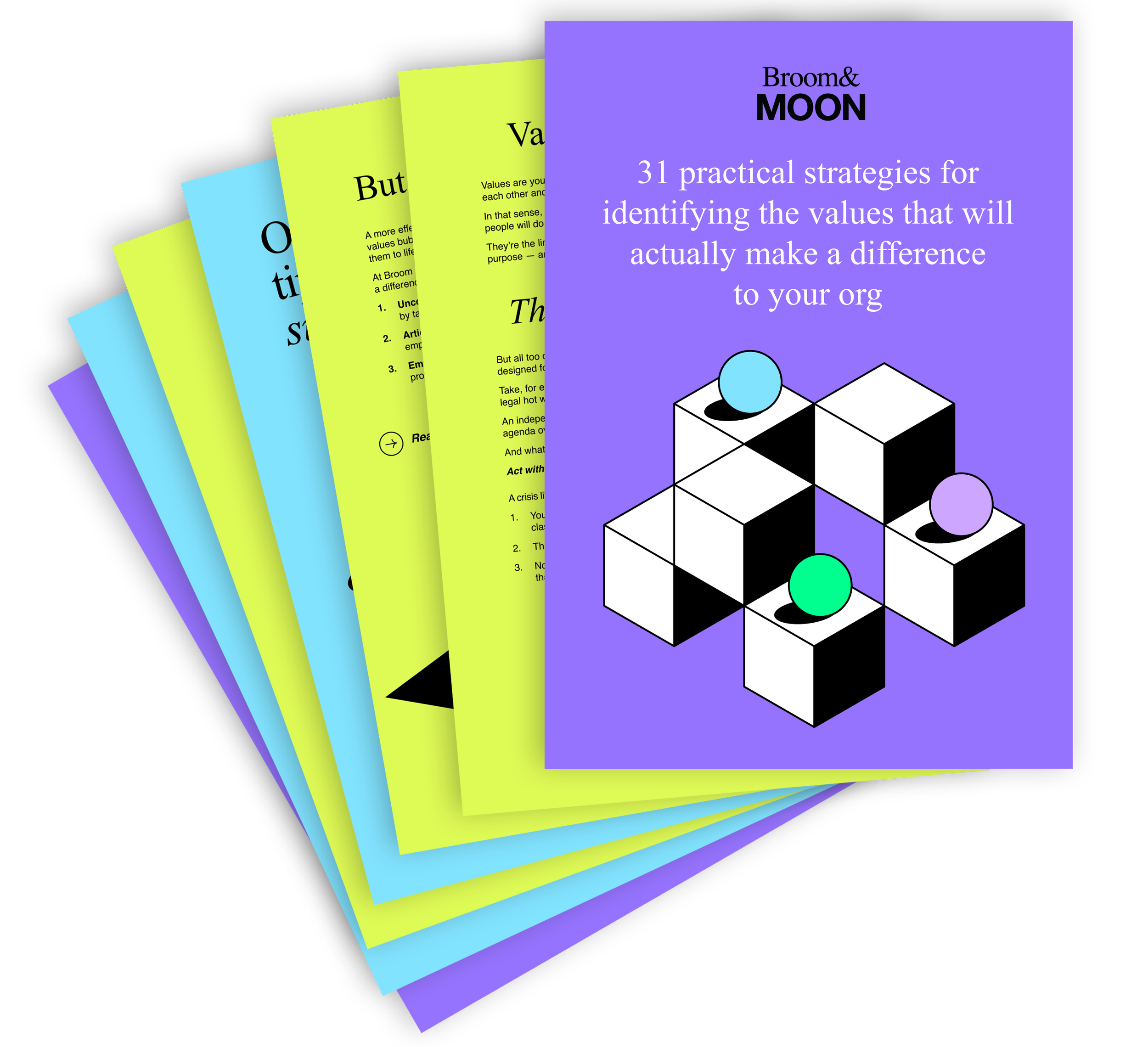How to come up with a memorable name for your product
Created a new business or product? Congratulations! Now you just have to come up with a catchy name.
Hmm. If you’ve spent more than a moment trying to find a name, you’ll know that’s a MUCH trickier task than it sounds.
Take it from Broom & Moon’s brand language experts: the fewer the words, the harder those words have to work. Which means the harder it is to land on the right ones.
As the old saying goes: “I didn’t have time to write you a short letter, so I wrote you a long one instead”.
Think of your brand name as a single-word introduction to your target buyer. That one-word intro isn’t going to be something you just “come up with”.
It requires time. And thought. And a process.
Yes, ultimately, inspiration can strike, but only after hours spent thinking, researching, pursuing false-starts and eliminating the also-rans.
But it’s a worthwhile effort when you consider the dollar value of nailing that word or words that make you stand out.
Or, as in our own case, when you see that potential client’s eyes light up when you tell them the story behind the name.
When helping clients find and choose a name, we start with a naming workshop. That involves bringing your team together to thrash out who you are as a business, who your customer is, and what kind of name will work best for your brand.
Here are the kind of questions we explore.
Who is the target buyer?
As with any aspect of a brand’s language, the starting point for your name should be why you exist and who you serve.
This is all about moving beyond what your product or service does and thinking about how it transforms the life of your target buyer. Questions we ask include:
What problem does your product or service solve?
What matters most to your buyer?
How does the product or service make that buyer feel when they use it?
What does the world look like for them before and after using your product? What does it sound like? Depending on the product, what does it smell like? Taste like?
What pain does your product take away? What gain does it deliver?
How does your customer talk about their problem and the solution? What kind of language do they use — and how does their language differ from the language that’s used internally?
Will the target buyer change in the future? For example, does the name need to work as you grow into new markets?
What kind of name do we want?
Next, comes deciding on the type of name you’re after. There are lots of options here, so questions we ask include:
Do you want something evocative, metaphorical and storied — like Broom & Moon? Or Bluetooth (named after a Viking king who united Scandinavia, just as Bluetooth’s tech brings together different devices)?
Do you want something emotive that speaks to the feelings you inspire in your customer — like Innocent Drinks?
Do you want something playful and off the wall like MoonPig?
Do you want something that “does what it says on the tin” like Hotels.com?
How do you feel about abbreviations (like IBM) and compounds (like Instagram)?
How about words that are invented (Kodak) or misspelt (Google)?
What are the pros and cons of these different approaches for your brand?
What kind of names do your direct competitors have? How can your name stand out from theirs?
What are the industry norms? And do you want to break out of those norms? How brave do you feel about doing so?
What kinds of names appeal to the team?
What kinds of names will appeal to your customer?
The creative naming work begins…
After the workshop the creative work begins to come up with a shortlist of 3-5 potential names.
Getting to that shortlist might involve further desk-based research into how your target buyer thinks, feels and talks about their problem and your solution.
But it is also likely to involve mining a range of sources for inspiration. Music, literature, philosophy, science, geography and history (as with the Bluetooth example) are all avenues to explore.
Choosing a name from the shortlist: questions to ask
The next stage is a second workshop, where we get our client to consider the pros and cons of each name on the shortlist. We’ll ask them to evaluate the suggestions against a strict list of criteria, such as:
How well does each capture the customer benefit?
How easy it is to pronounce?
What’s the URL or trademark availability?
How does it fit with the business strategy (e.g. will it support expansion into new markets)?
What does it make you think of when you see it?
Note how none of these is “do you like it?”. Subjective preferences (especially paired with decision-making-by-committee) can lead to bland, unmemorable or clunky results. Which is why we often play this hilarious video to clients to warn them off wordsmithing.
Would the name Bluetooth have seen the light of day had its creators taken on board all the feedback we’re sure it got (“It’s a bit weird”, “No one will get it”, “I still prefer RadioWire”...)
Talk to us about naming your business or product.


